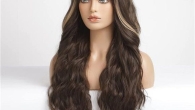
How to Repair Wigs: The Ultimate Guide to Reviving Your Look
Wigs can be a fantastic way to change up your look, but over time, they may need some TLC. Whether it’s from everyday wear, styling, or storage, knowing how to repair wigs can extend their lifespan and keep them looking fresh. In this ultimate guide, we’ll delve into various repair techniques for different types of wigs, including synthetic and human hair wigs. Learn how to tackle common issues and get your wig back to its best.
Understanding Different Wig Types
Synthetic Wigs
Synthetic wigs are made from man-made fibers and can mimic the appearance of natural hair. They’re generally more affordable and come pre-styled, but they can be less versatile when it comes to heat styling and may suffer from tangling.
Human Hair Wigs
Human hair wigs are crafted from real hair, offering a natural look and feel. They can be styled, dyed, and treated just like your own hair. However, they require more maintenance and can be more costly.
Common Wig Problems and Solutions
Tangling and Matting
Tangling and matting are common issues, especially with synthetic wigs. To address this:

- Detangle with Care: Use a wide-tooth comb or wig brush specifically designed for wigs. Start from the tips and work your way up to avoid breakage.
- Use Wig Detangler: Apply a wig-specific detangling spray to help loosen knots. Avoid regular hair products as they can damage the fibers.
Frizz and Flyaways
Frizz and flyaways can detract from a wig’s appearance. Here’s how to combat them:
- Use a Frizz Control Spray: Lightly mist the wig with a frizz control spray designed for synthetic or human hair wigs.
- Avoid Heat: For synthetic wigs, avoid using heat as it can exacerbate frizz. For human hair wigs, low heat settings are preferable.
Loss of Shape
If your wig has lost its original style or shape:
- Steam or Wet Set: Gently steam the wig to restore its shape. For human hair wigs, you can use a wet setting method with rollers and allow it to air dry.
- Re-curling: Use appropriate styling tools for synthetic wigs and ensure they are compatible with the wig’s fiber.
Repairing Damaged Wig Caps
Tears and Holes
If you have a tear or hole in the wig cap:
- Sewing Kit: Use a needle and thread to carefully sew the tear. Match the thread color to the wig cap for a seamless repair.
- Wig Repair Tape: For a quick fix, apply wig repair tape to seal small holes or tears. This is especially useful for synthetic wigs.
Loose or Detached Wigs
If your wig cap is becoming loose:
- Adjustable Straps: Most wigs have adjustable straps or bands inside. Tighten these to secure the wig better.
- Wig Grip: Consider using a wig grip band to keep the wig in place and prevent slippage.
Caring for Your Wig Post-Repair
Washing and Conditioning
Proper care after repair is crucial for maintaining wig health:
- Use Wig-Specific Products: Always use shampoos and conditioners designed for wigs. Avoid heavy conditioners that can weigh down synthetic wigs.
- Gentle Washing: Wash the wig in cool water and avoid vigorous scrubbing. Gently pat dry with a towel and avoid wringing.
Storage Tips
Proper storage can prevent future damage:
- Use a Wig Stand: Store your wig on a wig stand or mannequin head to retain its shape and avoid tangling.
- Keep in a Cool, Dry Place: Avoid storing your wig in direct sunlight or damp areas to prevent damage.
Professional Wig Repair Services
If your wig requires extensive repairs:
- Consult a Specialist: Consider taking your wig to a professional wig stylist or repair specialist who can handle more complex issues.
- Wig Repair Clinics: Some salons specialize in wig repairs and can offer services such as re-lacing or professional cleaning.
How to Repair Wigs: Expert Tips and Techniques
Repairing Synthetic Wigs
Synthetic wigs are made from artificial fibers that can be sensitive to heat and styling products. Here’s a step-by-step guide to fixing common issues:
Fixing Frizz
Frizz can be a major issue with synthetic wigs. Here’s how to handle it:
- Apply Wig Conditioner: Use a wig-specific conditioner to smooth the fibers. Apply a small amount and avoid over-saturating the wig.
- Comb with Care: Use a wig comb or brush designed for synthetic fibers. Comb gently to avoid breaking the fibers.
- Anti-Frizz Spray: Lightly mist the wig with an anti-frizz spray designed for synthetic wigs to help control flyaways.
Repairing Split Ends
Split ends on synthetic wigs can make them look worn out. Here’s how to fix them:
- Trim Carefully: Use sharp, hair-cutting scissors to trim the split ends. Trim just a small amount to avoid affecting the overall style.
- Use a Repair Serum: Apply a small amount of wig repair serum to the ends to help seal and smooth them.

Restoring Shine
Over time, synthetic wigs can lose their shine. To restore it:
- Use a Wig Shine Spray: Apply a wig shine spray designed for synthetic wigs. Hold the spray about 6-8 inches away and mist evenly.
- Avoid Overuse: Too much product can weigh down the fibers, so use sparingly.
Repairing Human Hair Wigs
Human hair wigs offer more versatility but require careful maintenance. Here’s how to address common problems:
Fixing Dryness
Dryness can make human hair wigs look lifeless. To restore moisture:
- Deep Conditioning: Apply a deep conditioning treatment. Leave it on for 15-30 minutes for maximum hydration.
- Use Leave-In Conditioner: Apply a leave-in conditioner to keep the hair moisturized throughout the day.
Addressing Color Fading
Color can fade over time due to washing and sun exposure. To combat this:
- Color-Enhancing Products: Use color-enhancing shampoos and conditioners designed for color-treated hair.
- Avoid Sun Exposure: Store your wig in a cool, dark place to prevent color loss from UV rays.
Dealing with Tangling
Human hair wigs can tangle, especially if they are long. To detangle:
- Condition and Detangle: Apply a conditioning spray and gently comb through the hair. Start from the tips and work your way up.
- Avoid Pulling: Be gentle to avoid pulling and breaking the hair strands.
Wig Repair Tools and Products
Having the right tools can make wig repairs much easier. Here’s a list of essential tools and products:
Essential Tools
- Wig Brush or Comb: A wide-tooth comb or wig brush is crucial for detangling.
- Sewing Kit: For repairing tears or holes in the wig cap.
- Wig Stand or Mannequin Head: For storing and styling your wig.
Recommended Products
- Wig Detangler Spray: Helps to loosen knots and reduce tangling.
- Wig Repair Serum: Seals split ends and adds shine.
- Frizz Control Spray: Controls frizz and flyaways.
Tips for Maintaining Your Wig
Proper maintenance can reduce the need for repairs. Here are some tips:

- Regular Washing: Wash your wig regularly to keep it clean and fresh. Follow the care instructions specific to your wig type.
- Avoid Excessive Heat: For synthetic wigs, avoid using heat tools. For human hair wigs, use heat styling tools with caution.
- Store Properly: Always store your wig on a wig stand or mannequin head to maintain its shape and prevent tangling.
When to Seek Professional Help
Some wig repairs are best left to professionals:
- Complex Repairs: For significant damage or intricate repairs, consult a professional wig stylist.
- Re-lacing or Re-styling: Professional services can handle re-lacing, re-styling, or color adjustments.
Bringing Your Wig Back to Life
Repairing wigs can seem daunting, but with the right techniques, you can extend their life and keep them looking fabulous. Whether you opt for DIY repairs or seek professional help, maintaining your wig with proper care and attention will ensure it remains a valuable part of your style repertoire.












Leave a Reply